Where to find the architecture of The Brutalist movie in Singapore
Sign up now: Get ST's newsletters delivered to your inbox

Examples of Brutalism in Singapore are (clockwise from top left) Pearl Bank Apartments, the Family Justice Courts, People’s Park Complex and Golden Mile Complex.
ST PHOTOS: KELVIN CHNG, ARIFFIN JAMAR, GAVIN FOO, DESMOND WEE
Follow topic:
A big winner at the Golden Globes in January 2025 was The Brutalist, a drama film starring American actor Adrien Brody as fictional Hungarian architect Laszlo Toth.
The film took home trophies in three major categories:
Directed by American film-maker Brady Corbet, the movie follows Toth as he builds a new life
According to Corbet, who co-wrote the film, Toth was based on real-life figures including Hungarian-German architect Marcel Breuer. Breuer is known for designing iconic furniture such as the Cesca chair, but is also considered to be a leading figure in the mid-century Brutalist design movement.
Some of his key architectural contributions include the Unesco headquarters in Paris and the New York City building now known as the Met Breuer, formerly the Whitney Museum of American Art.
Brutalist architecture rose to prominence in the 1950s as the trending post-war aesthetic, with an emphasis on raw materials and rough surfaces, massive forms that evoke a sense of scale, and a utilitarian feel.
Its use of plain concrete and its focus on minimalist functionality made it an obvious choice for many of the places that had to be rebuilt after World War II.

A still from The Brutalist, which hits Singapore cinemas on Feb 20.
PHOTO: UIP
But some have argued that it was also a response to the ravages of war, when many people gravitated towards honesty, bluntness and simplicity in both their personal philosophies and visual aesthetics.
The name “brutalism” comes from “breton brut” – French for raw concrete, which is a signature of Brutalist buildings.
Famous ones around the world include the Geisel Library of the University of California, San Diego, the US. Another is the Habitat 67 housing complex in Montreal, Canada, designed by Israel-born architect Moshe Safdie, who is also the mind behind Singapore’s Marina Bay Sands and Jewel Changi Airport.
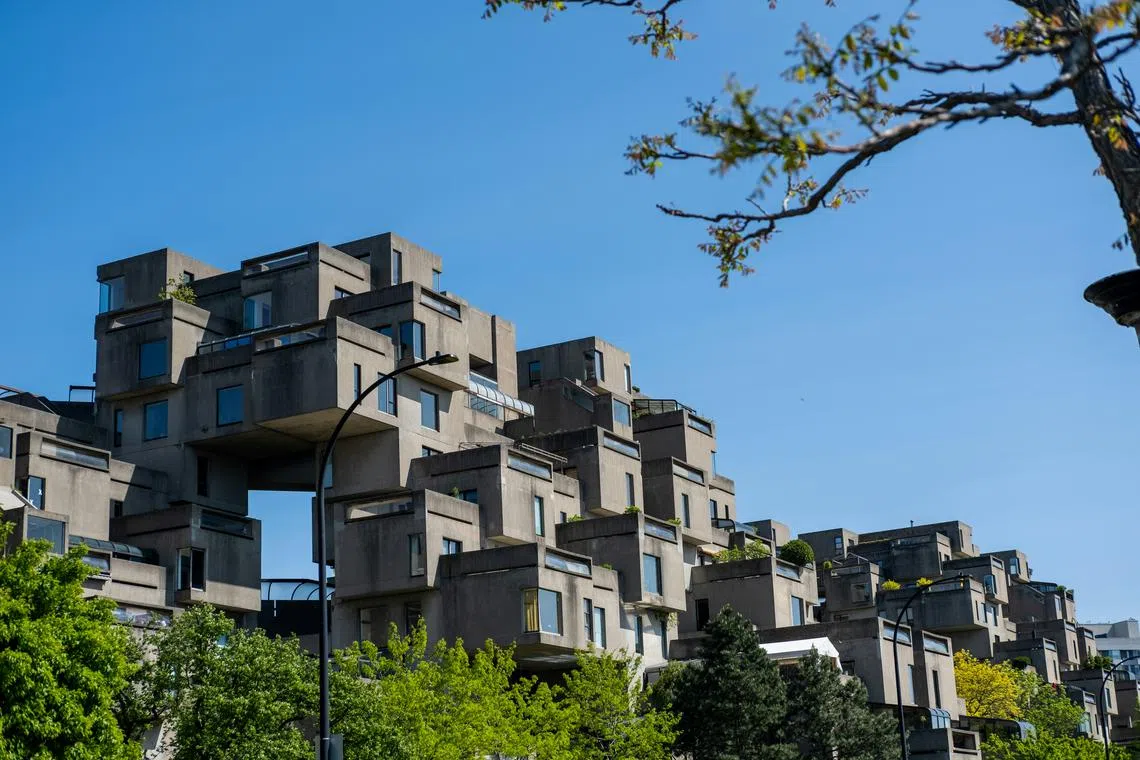
Habitat 67 in Montreal, Canada, is an example of Brutalist architecture.
PHOTO: UNSPLASH
Singapore, too, has its own Brutalist architecture. The Straits Times highlights five buildings that have dominated the Republic’s skyline. Consider it a preview with local elements before The Brutalist drops into Singapore cinemas on Feb 20.
1. Golden Mile Complex
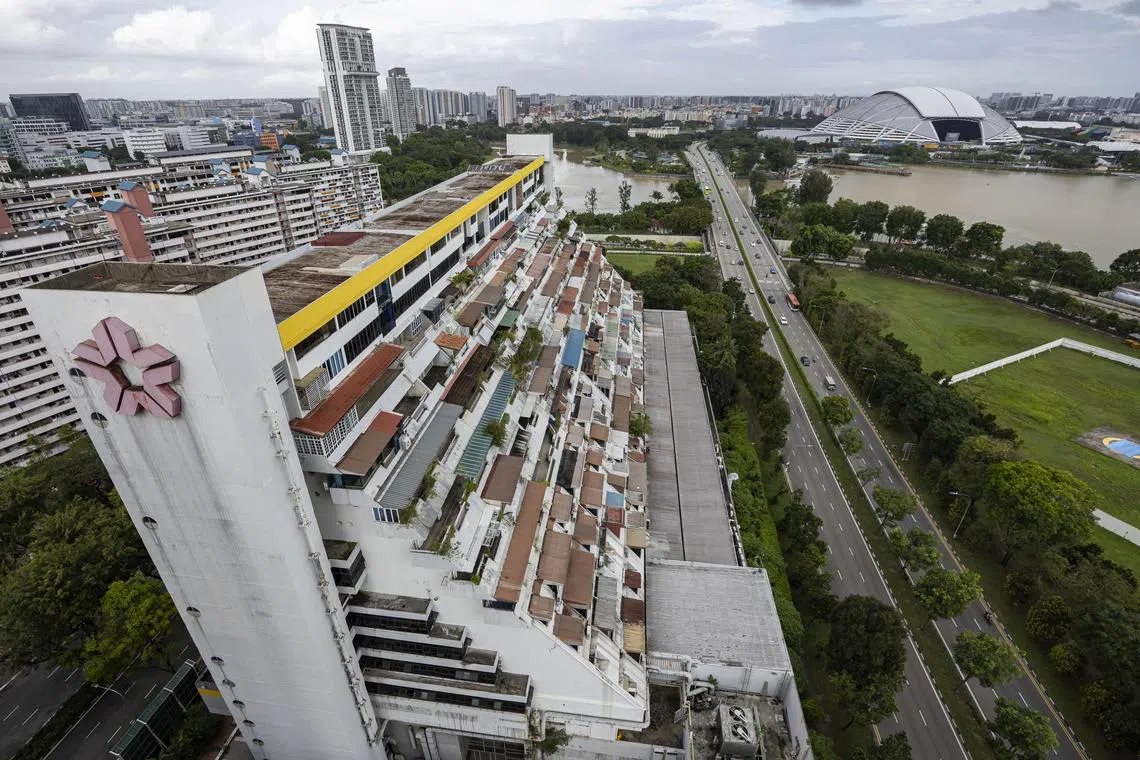
Golden Mile Complex in Beach Road.
ST PHOTO: BRIAN TEO
This landmark was designed by architects William Lim, Tay Kheng Soon and Koh Seow Chuan of the firm now known as DP Architects, and was completed in 1973. It was an early example of a mixed-use development not just in Singapore but also Asia, and comprised residential flats, offices and retail shops.
It was envisioned as a “concrete megastructure”, thereby embodying two key traits of Brutalist architecture.
2. State Courts Building
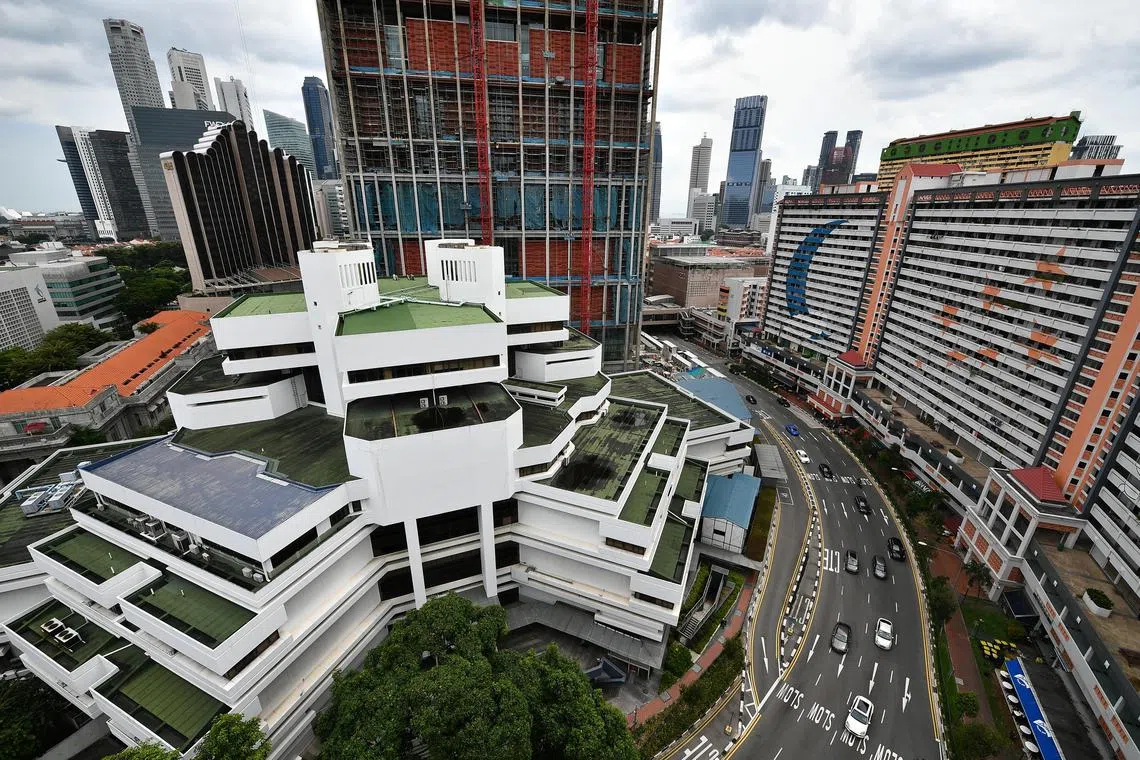
An aerial view of the State Courts (bottom left).
ST PHOTO: LIM YAOHUI
This building no longer houses the State Courts – the Family Justice Courts moved in towards the end of 2024 – but the moniker has lingered in colloquial parlance, perhaps because of its memorable octagonal shape.
The fortress-like building, with its angular lines and lack of ornamentation, is an example of how Brutalist architecture can be timeless in its visual appeal and impact. It was designed by architect Sonny Chan.
3. People’s Park Complex
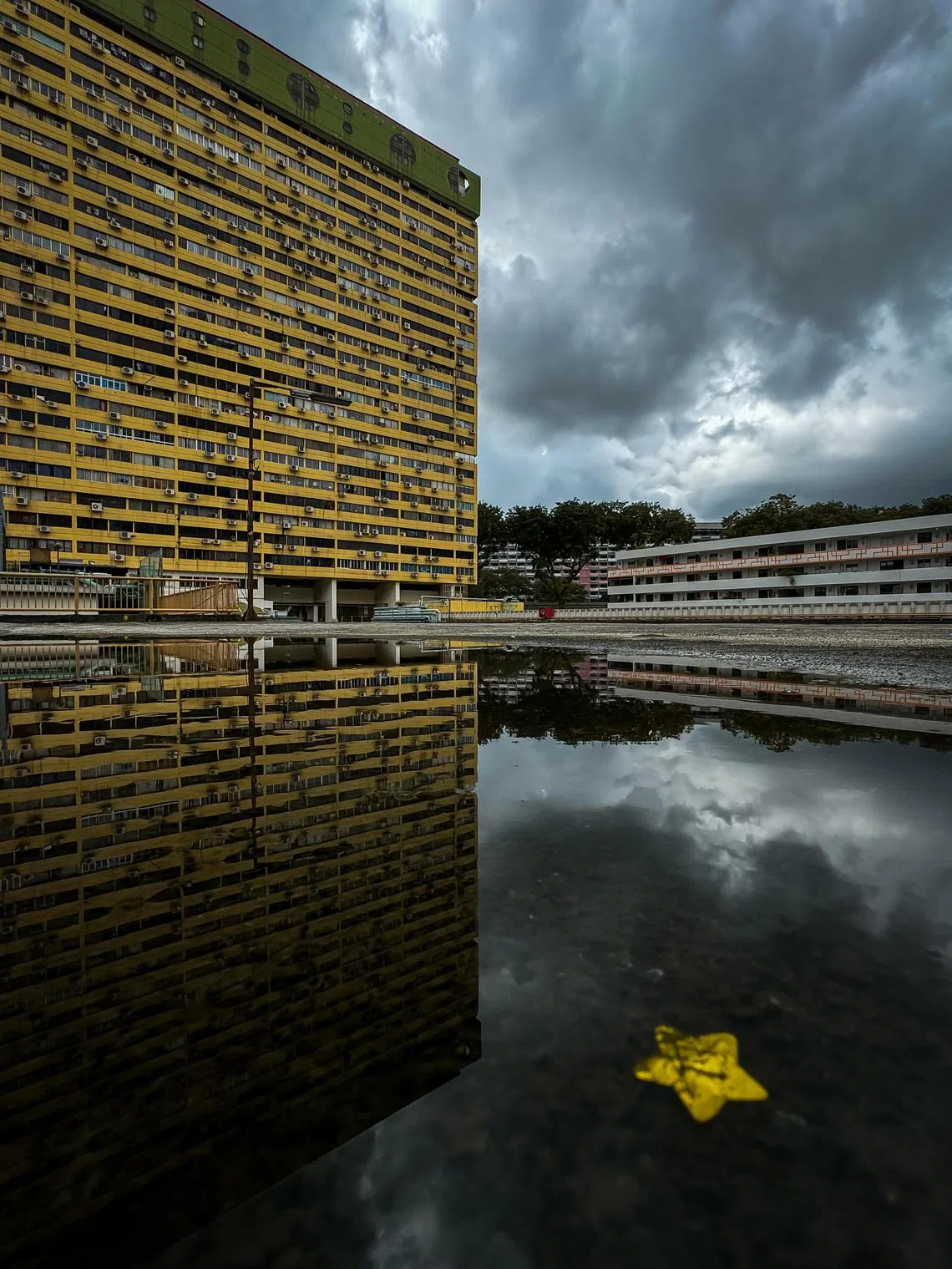
People’s Park Complex in Chinatown.
ST PHOTO: GAVIN FOO
Like Golden Mile Complex, People’s Park Complex was also designed by DP Architects, was completed in 1973, and comprised a mix of residential homes and commercial spaces. It holds a spot in Singaporeans’ hearts as a relic of a time and place made obsolete by rapid modernisation.
Although it now sports a yellow and green scheme, its facade was originally finished in raw concrete – which, together with its stern geometric structure, kept it in the sphere of traditional Brutalism.
4. Jurong Town Hall
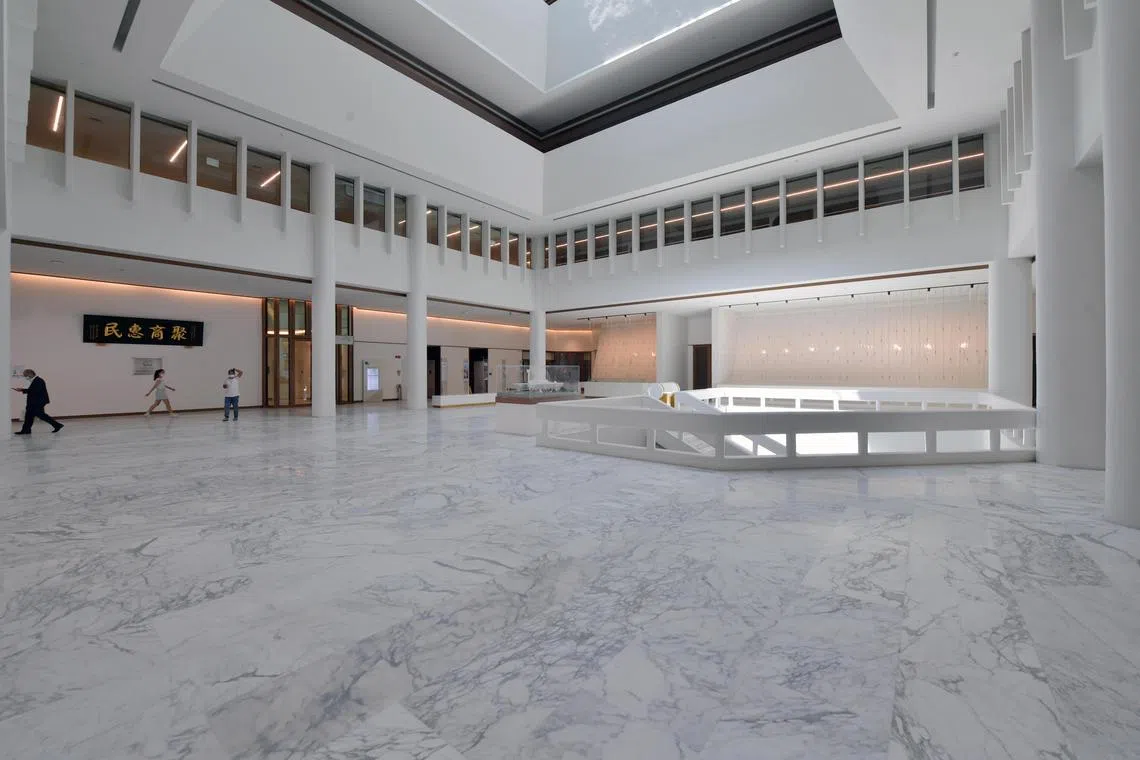
An interior shot of Jurong Town Hall.
ST PHOTO: ALPHONSUS CHERN
Singapore’s Brutalist architecture was not limited to the city centre. In the west, Jurong Town Hall is a symbol of Singapore’s industrial aspirations – and as a striking manifestation of Brutalist ideals, with its utilitarian structure and unadorned facade.
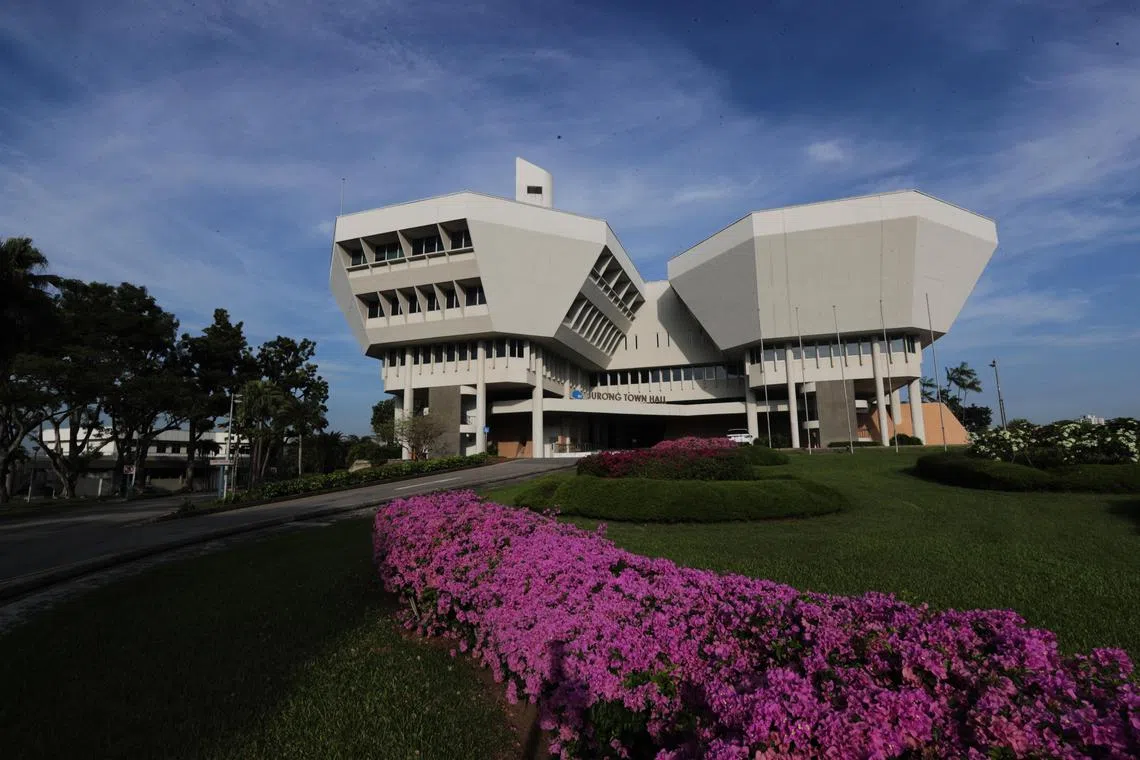
An exterior shot of Jurong Town Hall.
ST PHOTO: KELVIN CHNG
Construction was completed in 1974, after which it served as the headquarters of Jurong Town Corporation until 2000. Now, it houses trade associations and chambers. Architect Lim Chong Keat led the team that designed the landmark.
5. Pearl Bank Apartments
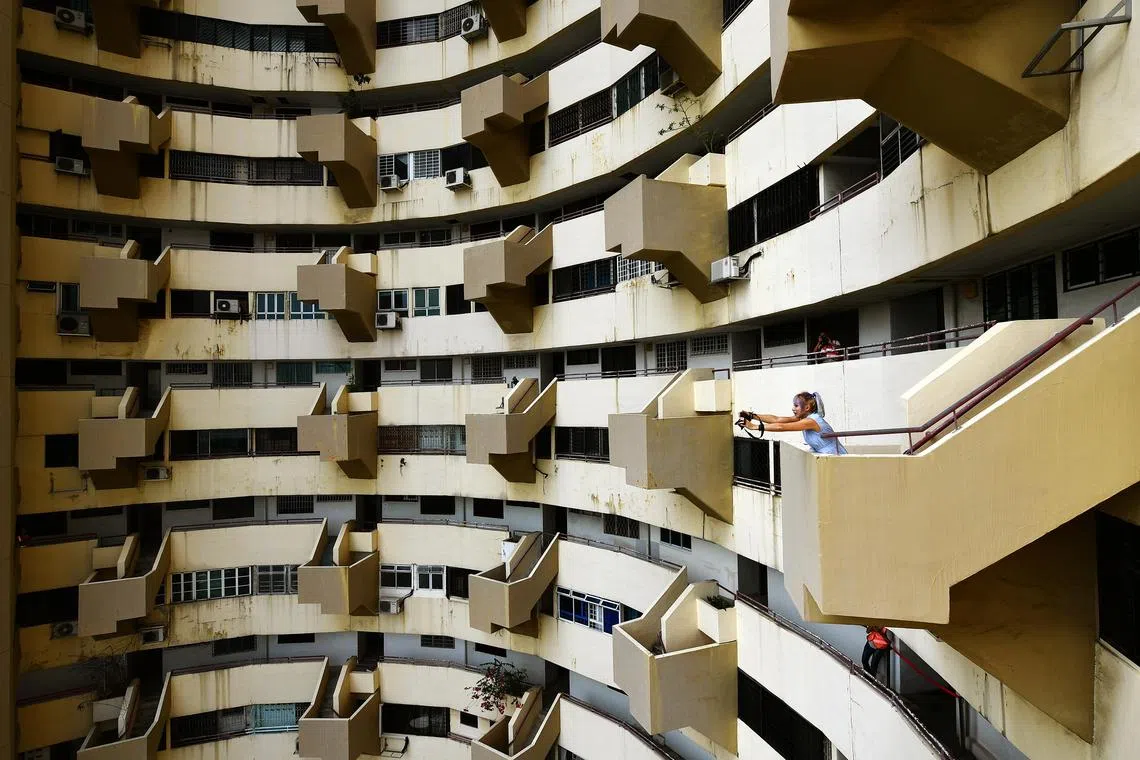
A close-up view of Pearl Bank Apartments before its demolition in 2020.
ST PHOTO: LIM YAOHUI
The 38-storey cylindrical cinder block known as the Pearl Bank Apartments no longer exists. But, for 44 years until its demolition in 2020, the horseshoe-shaped residential complex was a beloved emblem of Brutalist architecture, with its colossal structure and raw concrete exterior.
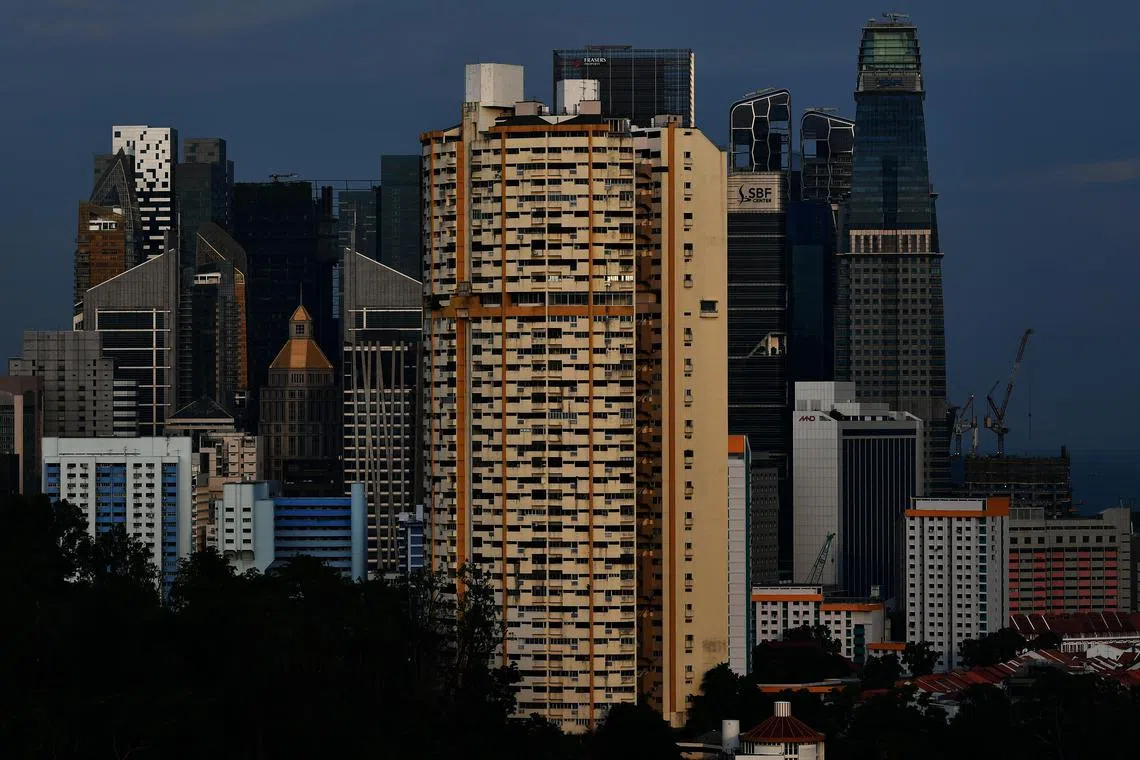
A 2019 photo of Pearl Bank Apartments.
ST PHOTO: LIM YAOHUI
The design by Singapore architect Tan Cheng Siong also showcased the bold, inventive style that informed the country’s aesthetic in the years immediately following independence.

